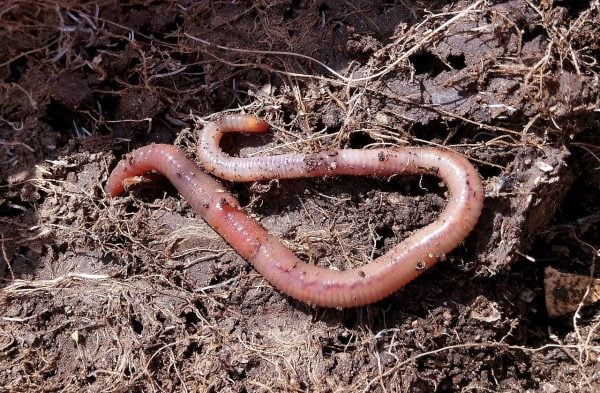Earthworms are small, soft-bodied creatures. But their impact on soil ecosystems is enormous. In agricultural and natural settings alike, earthworms play a critical role in maintaining soil health and fertility. This article explores how earthworms interact with soil and crops, and how different farming methods affect their populations.
-
Are Earthworms Common to All Soils?
The simple answer: No.
Earthworms are widespread, but not universal.
Distribution Factors:
- Soil texture – Earthworms prefer loamy soils. Sandy or clay-heavy soils can be too harsh or compact.
- Moisture – They need moisture to breathe through their skin. Dry soils often lack worms.
- Organic matter – More organic content = more food.
- pH levels – Earthworms avoid acidic soils.
- Temperature – They thrive in moderate temperatures. Extreme cold or heat can limit populations.
Types of Earthworms:
- Epigeic – Live on the soil surface, feed on litter. Common in compost.
- Endogeic – Live in the topsoil, make horizontal burrows.
- Anecic – Deep-burrowers. Pull plant matter from the surface into tunnels.
Regional Variation:
- Earthworms are less common in:
- Deserts
- High-altitude areas
- Over-tilled or chemically damaged soils
- Some areas (like North America’s northern forests) have invasive species brought from Europe.
- How Do Earthworms Impact Soil Structure?
Earthworms are soil engineers.
Their actions physically reshape the soil. This directly improves the environment for plants and other organisms.
Key Impacts on Structure:
- Burrowing:
- Tunnels increase aeration.
- They improve drainage by allowing water to move more freely.
- Help roots penetrate deeper into the ground.
- Soil Aggregation:
- Earthworm casts (waste) bind soil particles together.
- This improves soil tilth – a measure of its physical condition for planting.
- Reduced Compaction:
- Especially helpful in areas with heavy clay or where machinery is used.
- Earthworm activity helps loosen soil layers.
Benefits of Improved Structure:
- Better root growth
- Enhanced microbial life
- Easier cultivation
- Increased resilience to flooding and drought
- How Do Earthworms Impact the Soil Environment?
Earthworms influence both the biological and chemical properties of soil.
Nutrient Cycling:
- Earthworms consume dead plant material and organic matter.
- As it passes through their gut, it is:
- Broken down
- Mixed with microbes
- Excreted as nutrient-rich casts
- This process releases key nutrients:
- Nitrogen
- Phosphorus
- Potassium
- Calcium
Microbial Activity:
- Earthworm digestion stimulates microbes.
- Casts contain more microbial biomass than the surrounding soil.
- This microbial boost helps:
- Decompose organic matter faster
- Improve nutrient availability
- Build disease resistance
Soil pH Moderation:
- Earthworm activity can help buffer soil acidity.
- They mix deeper and more alkaline soil with acidic top layers.
Organic Matter Decomposition:
- Earthworms help integrate leaf litter and plant residues into soil.
- Speeds up composting.
- Reduces surface-level debris that can harbor pests.
- How Do Earthworms Benefit Crops in Agricultural Fields?
Earthworms are key allies to farmers.
Direct Benefits:
- Enhanced nutrient availability
- Earthworm casts are like natural fertilizer.
- Improved root growth
- Roots follow earthworm tunnels.
- Better water management
- Tunnels help water infiltrate evenly and deeply.
- Reduced erosion
- Soil stays aggregated and resists runoff.
Yield Impact:
- Studies show 15% to 25% yield increases in worm-rich fields.
- Most pronounced in:
- Corn
- Wheat
- Soybeans
- Legumes
Soil Resilience:
- Earthworm-rich soils bounce back faster after stress:
- Heavy rain
- Drought
- Mechanical compaction
Natural Pest and Disease Control:
- Healthy soils support beneficial microbes.
- This suppresses plant pathogens.
- Reduces need for chemical treatments.
- How Does Conventional Chemical Agriculture Impact Soil Earthworm Populations?
Modern intensive farming often harms earthworm populations.
Primary Threats:
- Synthetic fertilizers:
- May alter pH and salt balance.
- Harmful to soil microbial communities.
- Can make soil less hospitable to worms.
- Pesticides and herbicides:
- Many are toxic to earthworms.
- Even sub-lethal doses can reduce feeding and reproduction.
- Tillage (plowing):
- Destroys tunnels.
- Exposes earthworms to predators and sun.
- Disrupts moisture levels.
- Monocultures:
- Lack plant diversity = less varied organic matter.
- Less food and fewer niches for worms.
Resulting Effects:
- Declining worm populations.
- Reduced soil health over time.
- Increased need for synthetic inputs to compensate.
- Does Organic Agriculture Increase Earthworm Populations in Agricultural Fields?
Yes. Organic systems tend to support and enhance earthworm populations.
Why?
- Use of compost and green manures:
- Provides rich organic matter.
- Offers abundant food for earthworms.
- Minimal chemical use:
- No synthetic pesticides or herbicides.
- Safer environment for soil biota.
- Reduced or no tillage:
- Preserves earthworm habitats.
- Protects tunnel systems.
- Crop rotation and diversity:
- Different root systems and residues increase food variety.
- Helps sustain multiple earthworm species.
Scientific Support:
- Long-term studies show:
- 2–3 times more earthworms in organic fields compared to conventional.
- Higher diversity of worm species.
- Strong correlation between organic practices and improved soil structure.
Conclusion: Earthworms as Partners in Sustainable Farming
Earthworms are unsung heroes of agriculture.
Their ability to improve soil structure, enhance nutrient cycling, and support crop health makes them indispensable. As global agriculture seeks more sustainable paths, protecting and promoting earthworm populations should be a priority.
Key Takeaways:
- Earthworms are not present in all soils, but thrive where conditions are right.
- They improve soil physically, chemically, and biologically.
- Healthy worm populations can boost crop yields and reduce dependence on chemicals.
- Conventional farming often depletes earthworm populations.
- Organic and regenerative practices help restore them.
By treating soil not just as dirt, but as a living system — and earthworms as critical players — we can build healthier farms, stronger ecosystems, and a more resilient food system.

 Are Earthworms Common to All Soils?
Are Earthworms Common to All Soils?